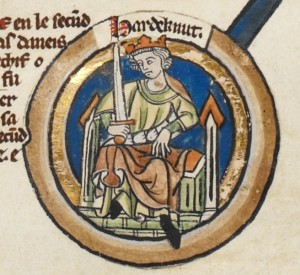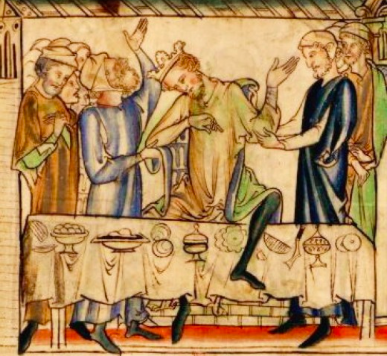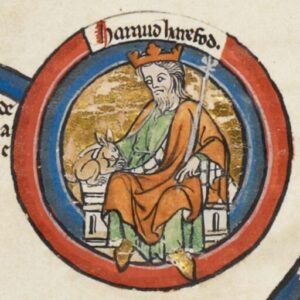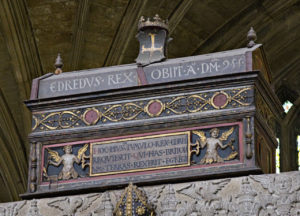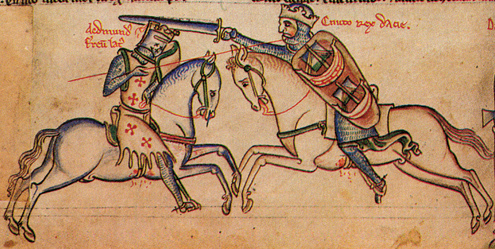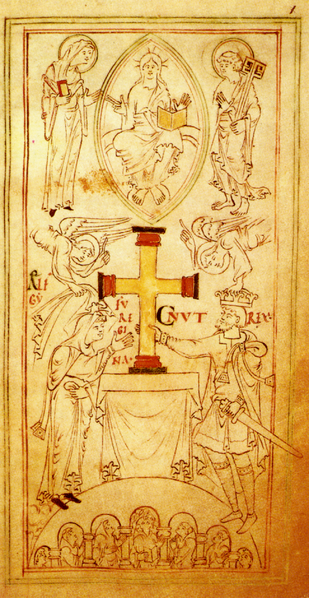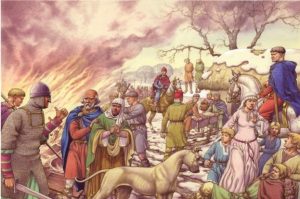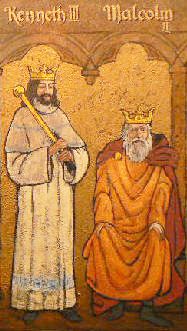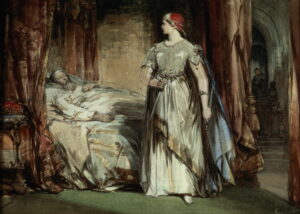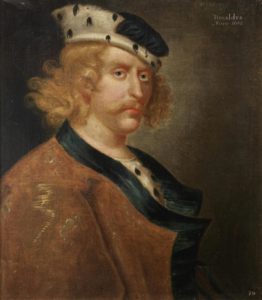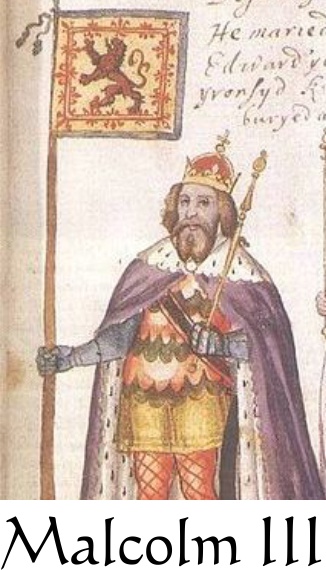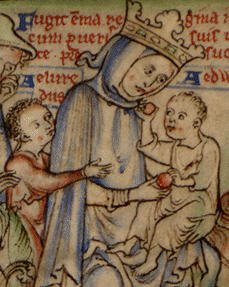
When Queen Emma (widow of Aethelred the Unready) married Canute around 1017, they agreed that the sons from their own marriage would take precedence over any previous children. Things didn’t entirely work out that way, but for the duration of Canute’s reign, her first two sons, Edward and Alfred, remained exiles in her native Normandy.
The second son Alfred’s story is a pitiful one, though it has come down to us full of contradictions. The part we are certain of tells us that during the reign of Harold Harefoot, while Emma lived at Winchester, Alfred landed on the Kentish coast with a band of followers. On orders of the King he was seized, his followers either killed or sold into slavery, and Alfred had his eyes put out, soon dying of his wounds. What we don’t know was why he came to England in the first place, and who exactly was responsible for the dastardly deed, looked upon with disgust even by the Anglo-Saxons hardened to such violence.
One of the rumors was that Emma, discouraged by the non-appearance of Harthacnut, sent a letter to Edward and Alfred encouraging them to invade England and claim the crown. Others conjectured they were testing invasion plans on their own volition. Some say King Harold forged a letter in their mother’s name, intending to lure them to their deaths. Still others said that her sons were simply paying her a visit.
It was said that Edward landed with 40 ships at Southampton and Alfred landed at Dover; the Norman account numbered Alfred’s followers at 600, though other accounts said he came with less than a dozen friends. It has even been stated that Edward fought a battle and defeated the English with great slaughter (considering Edward’s later peaceable reign, I tend to doubt this). However, on hearing of Alfred’s fate, Edward made a hasty retreat back to the safety of Normandy.
It seems relatively certain that Alfred’s capture came as a surprise, and Earl Godwine of Wessex has invariably been linked with his arrest. It is alleged that Godwine wined and dined Alfred, lodged his men throughout the town, then in the middle of the night, either Godwine’s men or Harold’s men raided the town, capturing, torturing and killing the Aetheling’s companions. Whether Godwine followed direct orders from King Harold or whether he acted on his own recognizance is total conjecture. Or he simply might have stepped aside and refrained from interfering with the King’s business.
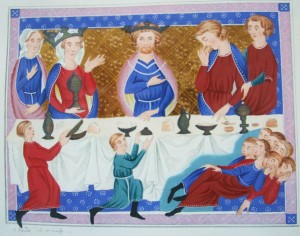
Did Godwine turn the Aetheling over to Harold’s soldiers, or was he personally responsible for taking Alfred to the island of Ely and blinding him? Nobody really knows, but Godwine was blamed by many of his contemporaries. Even though he later cleared himself in court, he was never able to rid himself of the stigma attached to the murder. In any event, the brutal circumstances gave Godwine’s enemies a great deal of ammunition to fling at him. Even at the end of his life, the legend persists that during a feast, Godwine made an oath to Edward that he should choke on a piece of bread if he was responsible for Alfred’s death. Then suddenly, the great Earl was taken with a seizure and collapsed at the table, thus confirming his guilt for all eternity. Do I believe this? Absolutely not!
